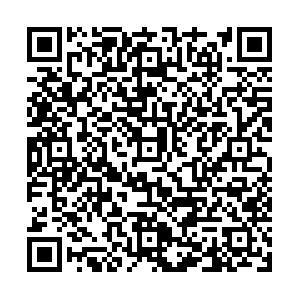Effect analysis of preoperative experiential nursing combined with anesthesia recovery nursing to reduce emergence agitation in patients undergoing HoLEP
-
摘要:
目的 探讨术前体验式护理联合麻醉苏醒护理对减轻经尿道前列腺钬激光剜除(HoLEP)术患者全麻苏醒期躁动的临床效果。 方法 纳入三六三医院2018年11月—2019年11月实施HoLEP术的患者108例,采用随机数字表法分为观察组和对照组各54例,观察组采用术前体验式护理联合麻醉苏醒护理,对照组采用传统护理。比较2组患者进入麻醉复苏室30 min时心率、血压、躁动发生率、非计划再次手术率、术后1 d尿道舒适度及护理满意度。 结果 观察组进入麻醉复苏室30min时心率[(78.41±6.23) 次/min vs. (89.35±7.91)次/min, t=7.613, P=0.018]、血压[收缩压(132.17±11.36) mm Hg(1 mm Hg=0.133 kPa) vs. (148.56±10.25) mm Hg, t=10.385, P=0.013;舒张压(86.34±7.83) mm Hg vs. (98.62±10.16) mm Hg, t=8.352, P=0.016]与对照组相比较,差异有统计学意义(均P<0.05)。观察组全麻苏醒期躁动发生率(12.96%)明显低于对照组(35.19%,P=0.025)。观察组非计划再次手术率(1.85%)低于对照组(5.56%,P=0.219)。观察组术后1 d尿道舒适度(85.19%)显著高于对照组(70.37%,P=0.031)。观察组护理满意度(96.30%)明显高于对照组(87.04%,P=0.047)。 结论 对于无留置尿管病史需全麻行HoLEP术患者,术前体验式护理联合麻醉苏醒护理能减轻全麻苏醒期躁动,减缓尿道不适感,提高护理满意度,值得推广应用。 -
关键词:
- 体验式护理 /
- 麻醉苏醒护理 /
- 经尿道前列腺钬激光剜除术 /
- 全麻苏醒期躁动
Abstract:Objective To investigate clinical effect of preoperative experiential nursing combined with anesthesia recovery nursing to reduce emergence agitation in patients undergoing holmium laser enucleation of the prostate (HoLEP). Methods Totally 108 patients undergoing HoLEP in 363 hospital from November 2018 to November 2019 were randomized into experimental group and control group by random number method, 54 cases each group. The experimental group received preoperative experiential nursing combined with anesthesia recovery nursing, and the control group received routine nursing care. The blood pressure and heart rate 30 minute after entering anesthesia recovery room, incidence of agitation, incidence of unplanned reoperation, urethra comfort postoperative 1 d and nursing satisfaction were compared between the two groups. Results The blood pressure [systolic pressure (132.17±11.36) mm Hg(1 mm Hg=0.133 kPa) vs. (148.56±10.25) mm Hg, t=10.385, P=0.013; diastolic pressure (86.34±7.83) mm Hg vs. (98.62±10.16) mm Hg, t=8.352, P=0.016] and heart rate [(78.41±6.23) times/min vs. (89.35±7.91) times/min, t=7.613, P=0.018] 30 minute after entering anesthesia recovery room in the experimental group was significantly lower than the control group (all P < 0.05). The incidence of agitation was significantly less in the experimental group than that in the control group (12.96% vs. 35.19%, P=0.025). The incidence of unplanned reoperation was lower in the experimental group than the control group (1.85% vs. 5.56%, P=0.219). The urethra comfort postoperative 1 d was significantly higher in the experimental group than the control group (85.19% vs. 70.37%, P=0.031). The nursing satisfaction was significantly higher in the experimental group than the control group (96.30% vs. 87.04%, P=0.047). Conclusion For no-catheter history patients undergoing HoLEP, preoperative experiential nursing combined with anesthesia recovery nursing can reduce emergence agitation, relieve urethral irritation and increase nursing satisfaction, it is worth clinical spreading. -
表 1 2组患者全麻苏醒期心率和血压比较(x±s)
组别 例数 心率(次/min) 收缩压(mm Hg) 舒张压(mm Hg) 观察组 54 78.41±6.23 132.17±11.36 86.34±7.83 对照组 54 89.35±7.91 148.56±10.25 98.62±10.16 t值 7.613 10.385 8.352 P值 0.018 0.013 0.016 注:1 mm Hg=0.133 kPa。 表 2 2组患者全麻苏醒期躁动程度及躁动发生率比较[例(%)]
组别 例数 ≤4分 5分 6分 7分 躁动发生 观察组 54 47(87.04) 4(7.41) 2(3.70) 1(1.85) 7(12.96) 对照组 54 35(64.81) 9(16.67) 6(11.11) 4(7.41) 19(35.19) 注:2组躁动程度比较,Z=2.722, P=0.007;2组躁动发生率比较,χ2=7.295,P=0.007。 表 3 2组患者术后1 d尿道舒适度比较[例(%)]
组别 例数 0级 Ⅰ级 Ⅱ级 Ⅲ级 尿道舒适度 观察组 54 20(37.04) 28(51.85) 4(7.41) 2(3.70) 48(88.89) 对照组 54 15(27.78) 23(42.59) 13(24.07) 3(5.56) 38(70.37) 注:2组尿道舒适度比较,χ2=5.708,P=0.017。 表 4 2组患者护理满意度比较[例(%)]
组别 例数 非常满意 基本满意 一般满意 不满意 总满意度 观察组 54 28(51.85) 20(37.04) 4(7.41) 2(3.70) 52(96.30) 对照组 54 22(40.74) 14(25.93) 9(16.67) 9(16.67) 45(83.33) 注:2组满意情况比较,Z=2.039,P=0.041;2组总满意度比较,χ2=4.960,P=0.026。 -
[1] 罗利珍. 麻醉恢复室患者全麻苏醒期躁动的护理研究进展[J]. 现代医院, 2019, 19(7): 1052-1054. doi: 10.3969/j.issn.1671-332X.2019.07.034 [2] DAS A K, TEPLITSKY S, HUMPHREYS M R. Holmium laser enucleation of the prostate (HoLEP): A review and update[J]. Can J Urol, 2019, 26(4 Suppl 1): 13-19. [3] 周楠, 张美芬, 袁京燕, 等. 全麻术后患者苏醒期发生躁动的现状及影响因素分析[J]. 护理学报, 2017, 24(19): 47-51. https://www.cnki.com.cn/Article/CJFDTOTAL-NFHL201719013.htm [4] 黄群英, 李倩萍. 麻醉复苏室护理人员参与术前探访对改善患者在复苏期躁动程度的效果[J]. 系统医学, 2017, 2(4): 147-149. https://www.cnki.com.cn/Article/CJFDTOTAL-XTYX201704052.htm [5] 钱静, 顾银燕. 基于快速康复外科理念的骨科全麻术后患者麻醉复苏期护理[J]. 护理学杂志, 2017, 32(22): 33-34. doi: 10.3870/j.issn.1001-4152.2017.22.033 [6] 朱海娟, 王金保. 建立规范麻醉恢复室管理流程对降低苏醒期并发症的效果研究[J]. 护理管理杂志, 2016, 16(1): 69-71. https://www.cnki.com.cn/Article/CJFDTOTAL-HLGL201601032.htm [7] LOKESHWAR S D, HARPER B T, WEBB E, et al. Epidemiology and treatment modalities for the management of benign prostatic hyperplasia[J]. Transl Androl Urol, 2019, 8(5): 529-539. doi: 10.21037/tau.2019.10.01 [8] 徐虹霞, 潘红英, 王宏伟, 等. 加速康复外科实施过程中导航护士角色的设立及实践[J]. 中华护理杂志, 2017, 52(5): 530-534. doi: 10.3761/j.issn.0254-1769.2017.05.003 [9] 白雪, 杜英杰. 父母陪伴对全麻苏醒期患儿焦虑躁动的影响[J]. 护理学杂志, 2018, 33(22): 38-40. doi: 10.3870/j.issn.1001-4152.2018.22.038 [10] 杨荣宽. 老年全麻手术苏醒期患者躁动发生状况及其危险因素[J]. 实用临床医药杂志, 2016, 20(1): 163-165. https://www.cnki.com.cn/Article/CJFDTOTAL-XYZL201601061.htm [11] 廖礼平, 王曙红. 全身麻醉术后患者苏醒期并发症发生情况调查分析[J]. 护理学杂志, 2016, 31(2): 61-63. doi: 10.3870/j.issn.1001-4152.2016.02.061 [12] 李霞, 李华, 杜秀云, 等. 手术室麻醉苏醒护理对减少腹部手术患者全身麻醉苏醒期躁动的作用探讨[J]. 吉林医学, 2016, 37(6): 1559-1560. doi: 10.3969/j.issn.1004-0412.2016.06.164 [13] WON Y J, LIM B G, YEO G E, et al. The effect of nicardipine on the surgical pleth index during thyroidectomy under general anesthesia: A prospective double-blind randomized controlled trial[J]. Medicine(Baltimore), 2017, 96(6): e6154. DOI: 10.1097/MD.0000000000006154. [14] ERDOGAN M A, OZGUL U, UCAR M, et al. Effect of transverses abdominis plane block in combination with general anesthesia on perioperative opioid consumption, hemodynamics, and recovery in living liver donors: The prospective, double-blinded, randomized study[J]. Clin Transplant, 2017, 31(4): 129-131. [15] SHI N J, ZHANG W X, ZHANG N, et al. Correlation of MDR1 gene polymorphisms with anesthetic effect of sevofluraneremifentanil following pediatric tonsillectomy[J]. Medicine(Baltimore), 2017, 96(24): 70-72. [16] 高静, 沈静静. 康复外科理念联合心理护理在泌尿外科手术患者中的应用[J]. 护士进修杂志, 2017, 32(1): 81-83. https://www.cnki.com.cn/Article/CJFDTOTAL-FSJX201701032.htm [17] 李琪, 李志红, 邢雪艳, 等. 麻醉前认知干预对降低颅内肿瘤术后患者全麻躁动发生率的作用[J]. 国际护理学杂志, 2017, 36(3): 382-385. doi: 10.3760/cma.j.issn.1673-4351.2017.03.031 [18] 王春瑛. 手术室麻醉苏醒护理对减少腹部手术患者全麻苏醒期躁动的疗效分析[J]. 四川医学, 2017, 38(7): 847-850. https://www.cnki.com.cn/Article/CJFDTOTAL-SCYX201707040.htm [19] 王玲, 彭洪, 匡显发, 等. 镇痛衔接预防全麻苏醒期躁动的临床研究[J]. 中国医学创新, 2017, 14(11): 9-12. doi: 10.3969/j.issn.1674-4985.2017.11.003 [20] 周玉梅, 郭文俊. 舒芬太尼对依托咪酯全麻苏醒期躁动和血流动力学的影响[J]. 中华全科医学, 2016, 14(11): 1857-1859. https://www.cnki.com.cn/Article/CJFDTOTAL-SYQY201611022.htm [21] 王伟娟, 刘英, 戴仁锋, 等. 羟考酮和帕瑞昔布钠对鼻内镜手术患者麻醉苏醒期躁动和术后疼痛及血清炎性因子的影响[J]. 中华全科医学, 2020, 18(3): 388-391. https://www.cnki.com.cn/Article/CJFDTOTAL-SYQY202003014.htm -

 点击查看大图
点击查看大图
计量
- 文章访问数: 192
- HTML全文浏览量: 105
- PDF下载量: 3
- 被引次数: 0



 下载:
下载: 